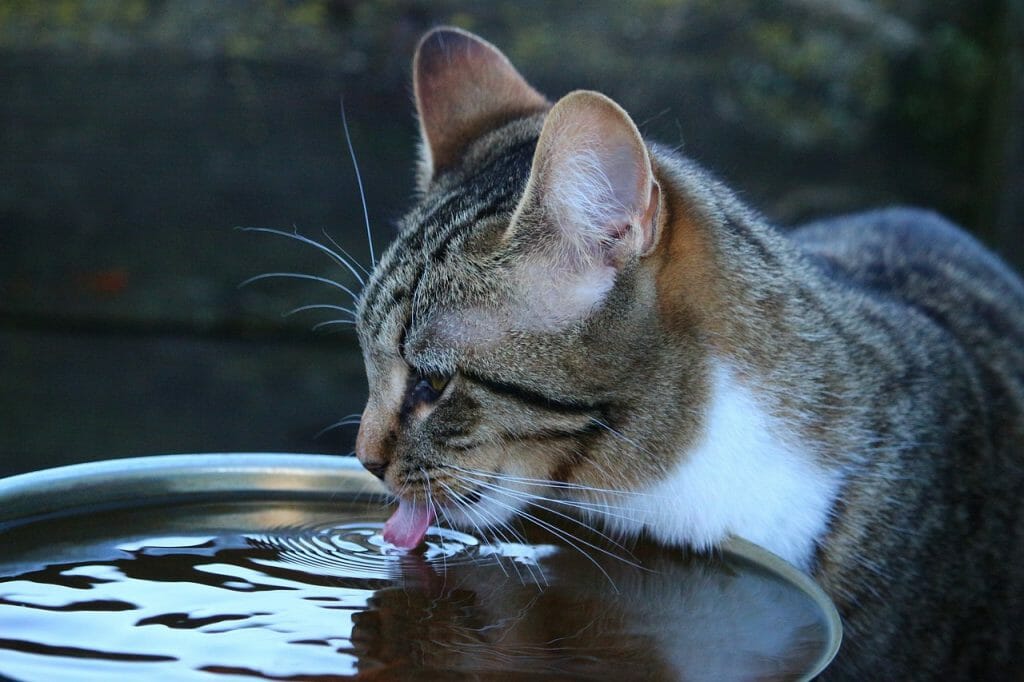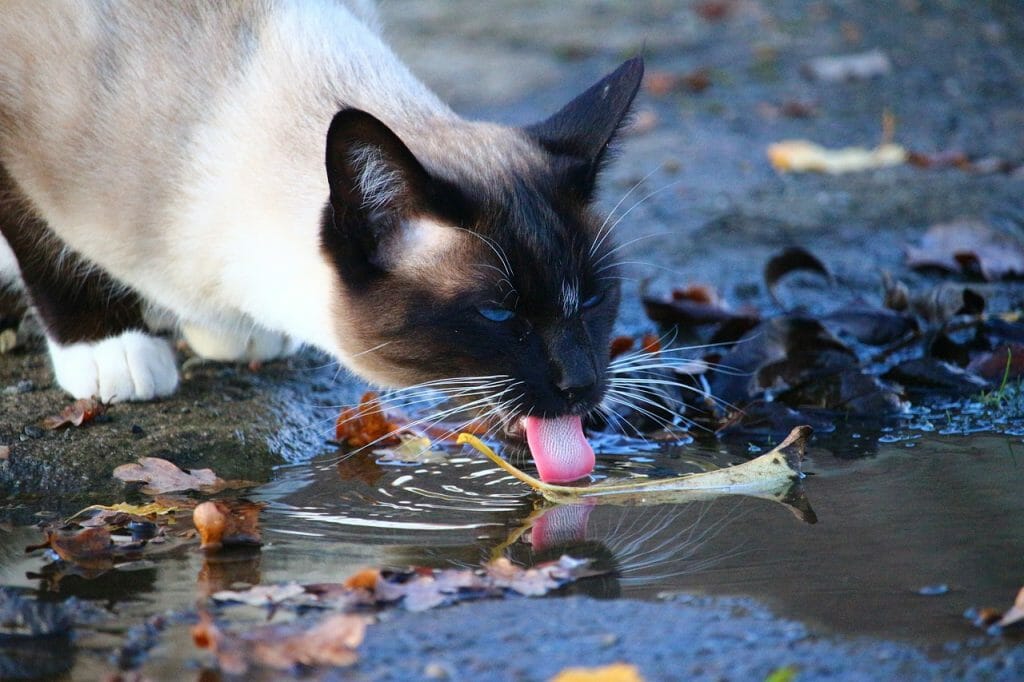How to Increase Cat Water Intake: Dehydration and How to Avoid It


One of the best ways to get your cat to drink more water is by providing them with a fresh daily dish. Ensure the dish is clean and free of smells that might make your cat hesitant to drink from it. If you’re struggling to get your cat to drink more, try placing some small fish in their water bowl or adding a few drops of orange oil to their food. Constantly monitor your kitty’s drinking habits, and be sure to adjust what you’re doing as needed!
Table of Contents
Signs of Dehydration in a Cat
Loose Skin
When your cat loses water, its skin will become loose and floppy – making them look uncomfortable and much less cute! If you notice this happening excessively or if your cat’s skin appears very dry, get them checked out by the vet ASAP for further diagnosis and treatment.
Sticky Gums
Keeping your cat hydrated and their gums healthy can be challenging, so following a few simple tips is essential. For example, you can try switching them to wet food instead of dry food, giving them plenty of fresh water at all times, and regularly cleaning their litter box. If your cat is still drinking less water or their gums are sticking to the teeth, it might be time for you to take action.
Depression or Lethargy
Depression or lethargy in cats can be caused by dehydration. Monitor your cat’s drinking habits regularly and get them checked by a vet if necessary. If they do not drink enough water, they may show signs of dehydration, such as dry eyes, decreased appetite, listlessness, staggering gait, low blood pressure, and even seizures.
Loss of Appetite


If you see one or more of the signs listed below in your cat, it is time to take them to the veterinarian as soon as possible. Urine may turn dark, there might be a decrease in bowel movements, and they will become lethargic.
Vomiting or Diarrhea
If you’re noticing your cat vomiting or experiencing diarrhea, it’s essential to take them to the vet as soon as possible. Vomiting and diarrhea can be signs of dehydration and, if untreated, can lead to serious health complications such as kidney failure or death.
Sunken Eyes
Kittens get dehydrated from time to time and may experience dry eyes. You can look out for several signs that your cat is dehydrated:
- An increase in pain.
- Loss of appetite or thirstiness.
- Reduced interest in food or water (even when they’re drinking).
- Sunken eyes with a dry appearance.
Panting
Panting excessively is another common sign that your cat might be dehydrated – so monitor their heart rate regularly and adjust the amount of water given accordingly. If they start losing appetite or becoming weak, it’s time to take them to the vet for further examination and treatment if needed!
Less Urination
If you’re noticing that your cat is urinating less, it’s essential to check in on hydration levels and make sure food and water intake are adequate. If these symptoms are present, take your cat to the vet for an exam. A dehydrated cat will drink less water and urinate more than usual.
Tips for How to Get Your Cat to Drink More Water
Getting your cat to drink more water can be a difficult task. However, it becomes much easier with a few simple tips and tricks. For example, if your cat isn’t drinking enough water, put them on a veterinarian-prescribed feline diabetes diet instead of drinking from the tap. Be persistent – cats love being given something they want and need (like plenty of fresh water) so keep offering it!
Switch to Wet Food
One great way to increase water intake is by switching to wet food. This will help your cat to absorb water more effectively and avoid dehydration. Additionally, keep an eye on your cat’s weight and adjust the amount of wet food fed accordingly.
If you’re looking for a more comprehensive solution, you can add fresh fruits and vegetables to your diet for extra hydration. Always make sure to consult your veterinarian if you’re unsure of what’s best for your cat. Thank you for choosing our blog!
Refresh Water Bowls Regularly
You must refill water bowls regularly, and freshwater should be used to refresh them if they’re drinking from a bowl on the counter or floor. Ensure the water in the bowl is cold and clean – cats will not drink from warm or dirty bowls.
If your cat drinks from a bowl on the counter or floor, you can put the bowl on the floor so your cat can drink from it more easily. Finally, give your cat food and water rewards for drinking water – this will help encourage them to drink more!
Change Water Location
One way to increase water intake is to separate water dishes for each cat. Keep tabs on how much your cat drinks, and adjust their diet or watering schedule if necessary. You can also place them near the cat’s favorite spots, on top of a shelf, or in a corner. Finally, make water bowls available so your cat has an easy place to drink.
Change the Source
One of the best ways to increase cat water intake is to change the source. This means trying different types of litter, adding fresh fruit or vegetables to their diet, or offering them a new water bowl regularly. If all else fails, call a veterinarian for help. Regularly changing the water supply can help your cat stay healthy and reduce vet bills down the road.
Mix and Match
Keeping your cat hydrated is essential for its overall health and well-being. One of the most effective ways to do this is by mixing and matching different water and food dishes and water fountain locations. Always clean up any spilled water or food, so your cat can have fresh hydration. Additionally, place a bowl of fresh water and wet food near their drinking fountain and watch them drink!
